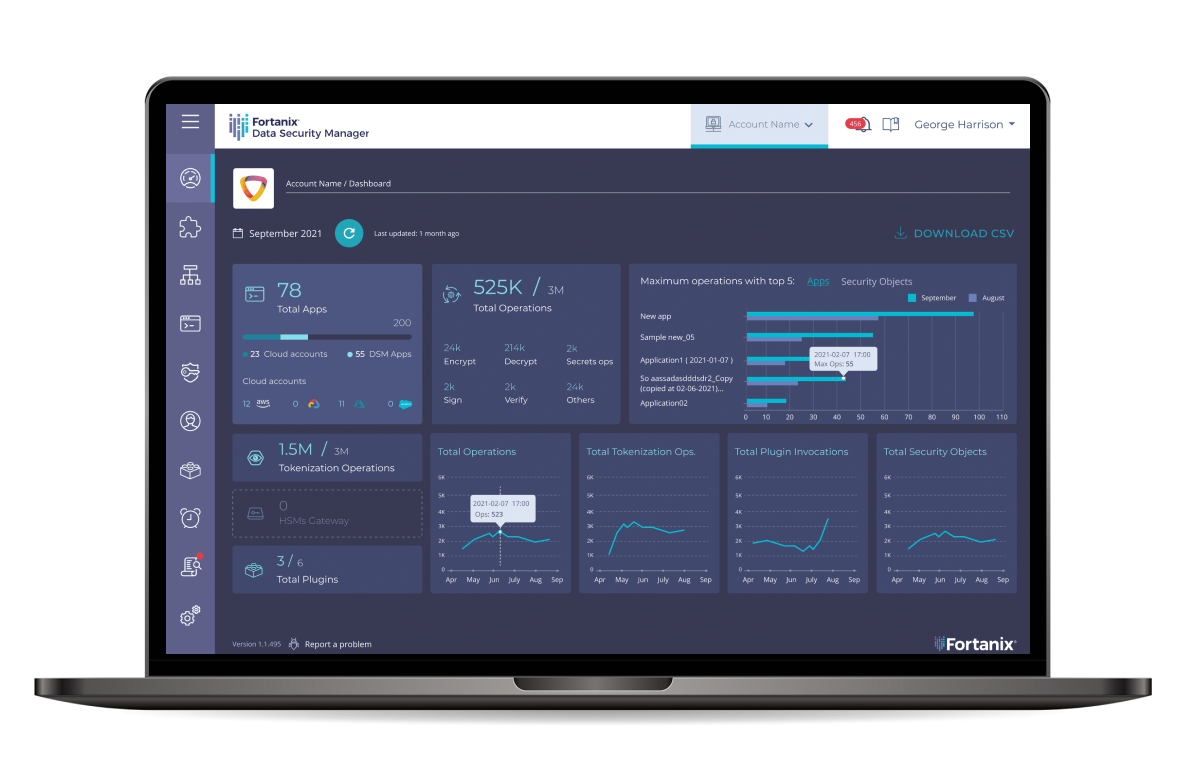Problem
With the advent of big data, machine learning and analytics, the ability to share data has the potential to discover drugs that cure diseases, eliminate financial fraud and unlock business insights that transform industries. However, organizations such as hospitals, financial institutions and businesses are rightfully prohibited by privacy regulations from sharing this powerful data. Advances in encryption, trusted execution environments (TEEs) and analytics now make it possible to protect privacy while sharing private data, unlocking and advancing new learning.

Solution Overview
Fortanix simplifies and secures the process of sharing private data without exposing it to other parties or violating privacy regulations. Multiple parties contribute encrypted data to a trusted execution environment called an enclave, where the data is combined, analyzed and then results are output in an encrypted format back to each party with the results of the analytics. Data remains encrypted throughout the entire process, protecting the privacy of the data while it is transferred, during computation and while stored.

Private multi-party analytics can be applied to any case in which multiple parties have private data that needs to be combined and analyzed without exposing the underlying data or machine learning models to any of the other parties. The technology could be applied to preventing fraud in financial services, detecting or developing cures for diseases in the healthcare industry or gaining a business insight. In the example illustrated above, multiple hospitals combined data to train a machine learning model to more accurately detect brain tumors using radiology information.
Federated Learning for Medical Imaging Example
- Each Party Has Confidential Data - Each hospital has private patient data that can improve the accuracy of the shared machine learning model.
- Each Party’s Data Encrypted with Private Keys – Machine learning models and patient radiology data is encrypted with private keys only accessible to each hospital.
- Secure Enclave Created – The Fortanix Runtime Encryption platform creates secure enclaves for the hospitals to upload their encrypted models and data sets.
- Datasets Combined and Models Trained – The analytics application runs inside the enclave, merges the data, trains the models, and derives a result.
- Results Provide to Each Party - The encrypted results containing the improved machine learning model and updated data set are provided back to each party without exposing any confidential data.

Without “singling out” or deidentifying individuals, data can be processed in a controlled, privacy-preserving fashion by applying, for example, secure multiparty computing (SMPC), differential privacy, security or confidential computing all in combination with privacy-aware machine learning (PAML) algorithms.
Gartner, 5 Areas Where AI Will Turbocharge Privacy Readiness, August 2019













